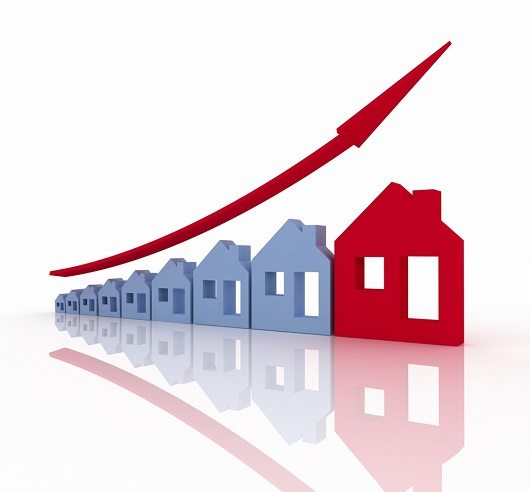The latest property price growth adds weight to predictions of a slowdown.
The average price of a residential property in this country increased by £14,000 over 2016, ending the year at a record high of £222,484, according to the Halifax house price index.
The fact that prices continued to increase towards the end of last year, including a 1.7% month-on-month hike in December defied predictions prior to the EU referendum that prices would fall should Britons opt for Brexit.
But experts remain divided over whether prices will continue to rise throughout 2017 as Britain begins the process to leave the EU with the Prime Minister Theresa May planning to trigger Article 50 by the end of this month.

In fact, the latest property price data from Halifax adds weight to predictions of a slowdown, with fresh data out this week showing that the annual rate of growth in UK house prices has slowed to its lowest level since July 2013.
The 5.1% home price increase in the year to February is almost half the 10% annual growth recorded by Halifax in March last year. The average price is now £219,949.
The lender said the reason for the slowdown was affordability, as buyers grapple with record-high asking prices.
“A sustained period of house price growth in excess of pay rises has made it increasingly difficult for many to purchase a home,” said Martin Ellis, Halifax’s housing economist.
“This development, together with signs of reduced momentum in the jobs market and squeezed consumer spending power, is expected to curb house price growth during 2017.”
But a low supply of housing on the market and record-low mortgage rates should continue to support prices in some parts of the country.
The proportion of people’s earnings being spent on repayments, for instance is still relatively modest, with those with mortgages currently spending around 30% of their income servicing their loans, compared to the peak of 48% in 2007, the Halifax said.
Meanwhile, the number of homes coming on to the market continues to decline, even while new enquiries from buyers increase, as reported by the National Association of Estate Agents (NAEA), and this supply-demand imbalance looks set to push up home prices in some regions moving forward, albeit at a slower pace.
According to the latest Housing Report from the NAEA, there were 425 potential buyers registered per branch in January, up 10% compared with the previous month, while housing supply remains low in comparison.
The number of homes available to buy on estate agents’ books in January was 38. This is a decrease from December when 41 homes were available and the lowest recorded since July 2016.
The NAEA said that 7% of properties in January sold for more than the original asking price on the back of the widening supply-demand imbalance.
Mark Hayward, chief executive of NAEA Propertymark, said: “January saw a surge in buyers looking to kick off the New Year with a new home – but competition is rife with an average of 11 buyers chasing each property.
“The increase in the number of properties selling for more than asking price in January could be a result of heightened interest and the fact there is simply not enough housing to meet demand.”
To gain an idea of what your home is currently worth, click here.